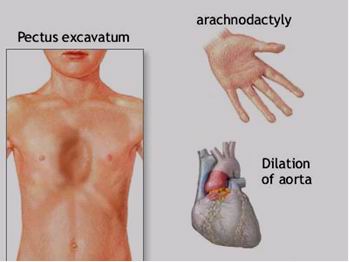My interest for unusual conditions in medicine and in
psychiatry goes back for a long time. I am one of those sleuths
of sorts that enjoy being able to identify a "lazy eye", while
watching television, by its technical name, even though — until
I drew the attention of others to this ocular phenomenon — no
one had noticed. Or when, if I happen to see the discrete eye
blinking and slight grimacing, of a new patient, to follow up
with questions aimed at diagnosing an unsuspected case of
Tourette’s syndrome.
Lincoln has been a much celebrated, and at the same time
misunderstood president, for his oratory genius and for his bouts
of melancholic humors. But, given his physique, did he also
suffer from Marfan’s?

Depressions seemed to accompany, in a variety of ways,
this egregious man all of his life. His mother was known as a
depressive woman, his wife may have been more than just depressed
and he was given to bouts of dark moods.
Many authors have intimated that depressive episodes,
often accompany the symptomatic picture of Marfan’s
Syndrome.
What is
Marfan’s syndrome?
Marfan is a disorder of the connective tissue of
hereditary origin caused by an aberrant behavior in the gene
FBN1, which is responsible for the production of a protein called
fibrillin. This gene resides in chromosome 15 and was established
as Marfan’s cause in 1991 thanks to the joint efforts of
Johns Hopkins Hospitals and Portland Shriners Hospital. Actually
both centers share the distinction of being the leading
institutions and world resource for this condition.
The characteristics most common of Marfan’s
are:
Arms and legs uncommonly long and thin, arachnodactilia
(fingers are also long, giving the hands a spider appearance).
Besides these findings, very high stature with marked leanness,
myopia, and the tendency for the crystalline lens to become
spontaneously dislocated.


Página siguiente  |